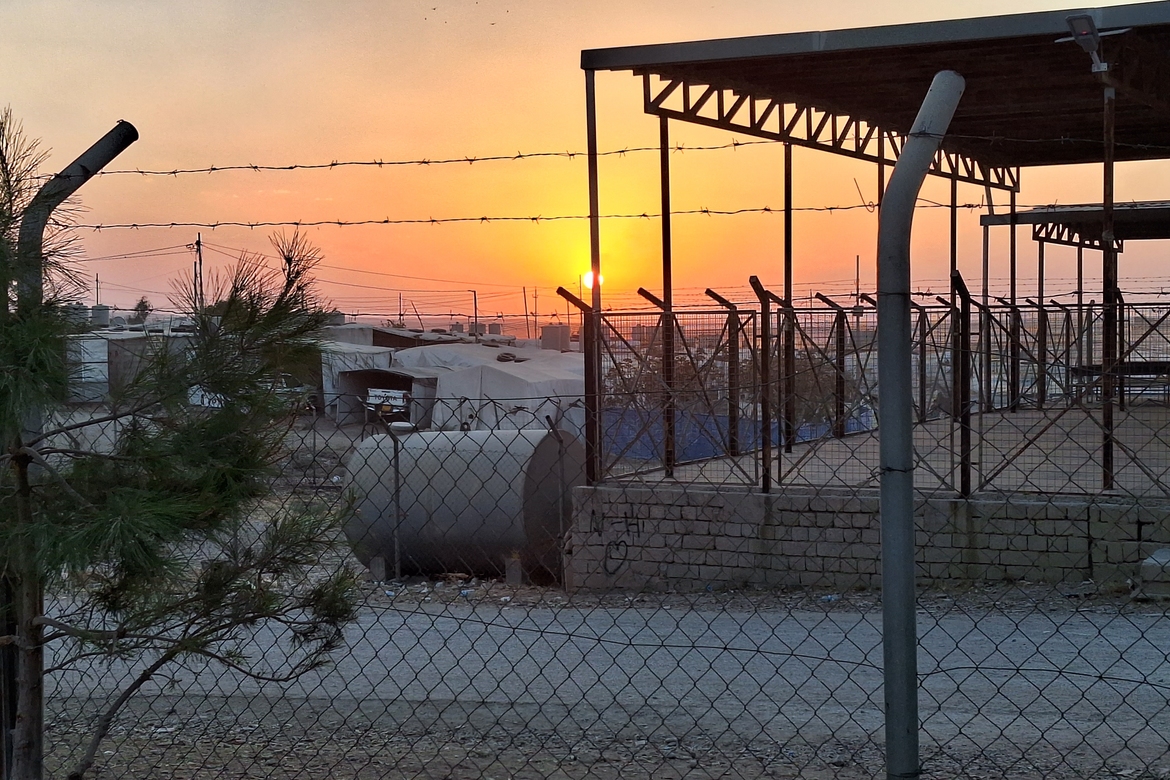Yazidis-On the Brink of Extinction
ISIS ruthlessly massacred men and turned women into sex slaves and commodities. Ten years later, the surviving Yazidis are on the verge of losing all hope for the future.

The sun is setting on a IDP camp for Yazidis in northern Iraq.
Op-Ed by Johannes Morken, Editor at Stefanus Alliance. Photo: A. Gihlemoen
We remember the harrowing cries for help from Sinjar in northern Iraq back in 2014. Starting on August 3rd, ISIS fighters launched a campaign to eradicate a relatively unknown religious minority, branding the peaceful Yazidis as "infidels" and "devil worshippers."
ISIS massacred indiscriminately, filling mass graves. Over 6,400 young women were kidnapped, forced into sexual slavery, and later sold like goods. Young men were abducted, forcibly converted, and indoctrinated into becoming ISIS fighters.
A decade later, the Yazidis remain trapped in tragedy. Some 2,700 women are still missing; their fates unknown. Hundreds of thousands of Yazidis continue to live as refugees, unable to escape their trauma – a trauma the world seems to have largely forgotten.
Help Out of Sight
Three years ago, the Iraqi parliament passed a law to assist surviving Yazidi women and other minority groups. It was a step forward, a sign of hope.
But three and a half years on, progress has been disheartening. The law has offered little help to those who survived kidnappings, rapes, and sexual slavery, or to those who managed to escape the mass killings.
Approximately 300,000 Yazidis still live in formal and informal refugee camps within the Kurdish region, where ISIS was kept at bay in 2014. When I last visited one of these camps outside Duhok in northern Iraq in the autumn of 2022, hope for the future was nearly nonexistent. Two years later, only a handful have managed to leave the camp, according to relief workers. Despair is deepening.
Earlier this year, the Baghdad government ordered the camps to be closed by July 30th. This deadline was extended after pressure from the Kurdish regional government. The displaced have nothing to return to— their homes are destroyed, and reconstruction hasn't begun. It could take decades to rebuild Sinjar, the heartland of the Yazidis in Iraq, and the surrounding areas.
Living with Deep Trauma
The 3,500 women who have been freed from ISIS captivity live with daily trauma. Dr. Nagham Hasan, a Yazidi herself, has devoted her life since 2014 to helping these women. She says they cannot forget the abuses they endured. Many have lost family members, and most still live in camps, describing their existence as akin to being in prison. Their trauma only deepens.
Two centers that Dr. Hasan helped establish offer psychological and therapeutic support for severe depression, but the question remains: Can a life marked by such trauma be rebuilt in tent camps, while brutal ISIS fighters remain at large?
The Iraqi law passed in 2021 granted surviving Yazidi women (and survivors from three other minorities) the right to education to make up for lost years, as well as psychosocial support and therapy. But very little has been implemented. It took over a year and a half to establish a directorate to oversee the aid, and even longer for funds to become available.
While large parts of Sinjar remain in ruins, the government has rebuilt other cities after ISIS
Bureaucratic Hurdles
The bureaucracy is overwhelming, and the application processes are lengthy, according to my sources within the Yazidi community. The government's inability or unwillingness to implement the law not only hinders survivors from receiving help but also discourages them from even seeking it. The U.S. Commission on International Religious Freedom (USCIRF) has echoed these concerns.
The Baghdad government cites a lack of funds as the reason for inaction. Yet, while large parts of Sinjar remain in ruins, the government has rebuilt other cities after ISIS. My sources describe this as ongoing discrimination against the Yazidis.
The 2021 Iraqi law recognized the atrocities committed against the Yazidis as genocide. This was a symbolic gesture. However, not a single step has been taken to hold those responsible accountable. Without justice, the Yazidis fear that another massacre could occur.
Recognizing Genocide
A dozen countries have formally recognized the Yazidi genocide, including the Unites States. Norway, however, has refused to do so, with a clear majority in Parliament deciding against it in February 2024. They argue that an international court or similar body must determine this after reviewing the evidence. The fact that the UN's investigative team, UNITAD, concluded three years ago in a report to the Security Council that the attack on the Yazidis constituted genocide is apparently not enough for Norway.
There are legal reasons for Norway's stance, but no judicial process has been initiated ten years after the slaughter began. The brutality and systematic nature of the atrocities easily justify the political use of the term genocide. How will Norway now fulfill its responsibilities under the Genocide Convention?
The outcome in Parliament has contributed to the growing despair among the Yazidis. Western nations – including Norway – have also stopped providing aid to Iraq. Attention has shifted to other wars and crises. As a result, Norwegian volunteer organizations are drastically scaling back their efforts to help the survivors, since state funding has dried up.
The surviving Yazidis feel abandoned. The tragedy seems never-ending.
Are we contributing to their suffering by forgetting?